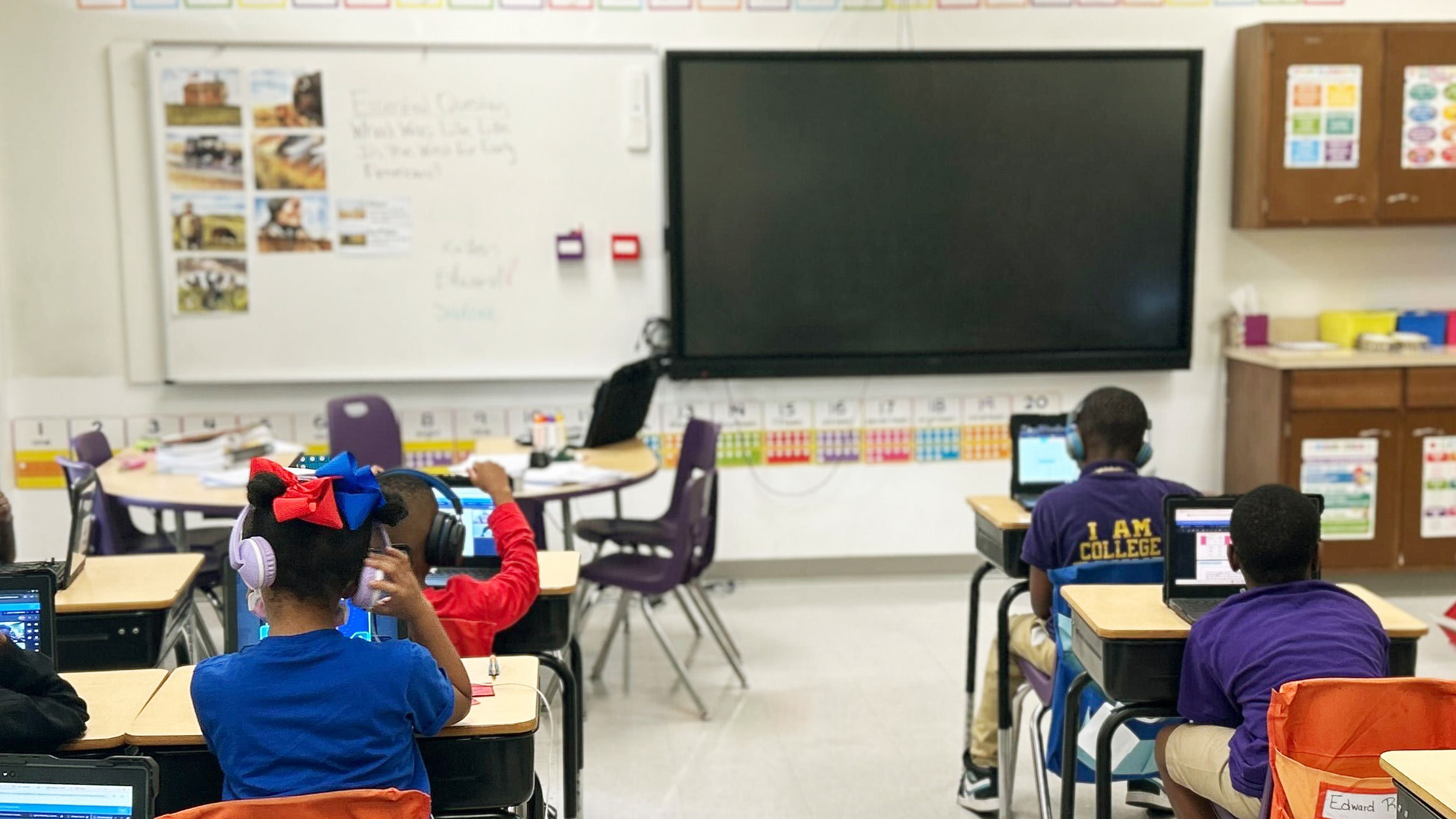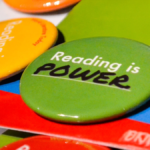Literacy professional development for teachers is essential, precious, and — unfortunately — it can often be pretty difficult to organize.
If this sounds like an understatement, don’t worry. It’s not just your district. With Science of Reading mandates flying right and left, many districts are currently struggling to make their teachers’ literacy instruction PD effective.
Truly impactful professional development has to be actionable, in-depth, and supported district-wide long after the development session ends.
You know this, of course. But when you’re trying to plan an airtight PD session in between classroom observations, vital data analysis, and so many other meetings, actually making it happen is a whole other challenge.
Now for some good news: The research shows effective professional development for teachers can improve student outcomes.
Here’s how to make that happen in your district so your teachers have the tools they need to level up literacy growth.
How to Make Literacy Professional Development For Teachers More Impactful
For staff development to boost literacy gains, you have to start at a foundational level and keep building on it until mastery is reached. These new initiatives and training take time to implement, and with fewer U.S. students than ever reading fluently, the stakes couldn’t be higher to get PD for teachers right.
What will make your professional development really impactful? The short answer is making sure PD isn’t happening in a vacuum.
The longer answer is: Don’t plan for a one-and-done event. Your professional development needs to tie-in with big picture goals, as well as daily instruction, and provide effective tools and resources to support teachers going forward.
Every PD for teachers, even if it’s only an introduction to a new concept, should offer two key elements:
- A plan for praxis
- A take-away component for teachers
What This Looks Like in Practice
PD designed to increase teacher knowledge in the Science of Reading might include a classroom tool or checklist for how to craft a unit of instruction on a particular topic or what should be included in a classroom library.
In addition to those key elements, research from the Learning Policy Institute shows your staff development should be structured to provide each of the following elements of effective professional development:
- Deep focus on content
- Active learning and strategic training
- Models of effective practice
- Coaching and expert support
- In-context collaboration
- Opportunities for feedback and reflection
- Ongoing practice, learning, and support
Let’s dig into these requirements a bit more and talk about how to meet them.
How to Structure High-Impact Professional Development for Teachers
1. Start With The “Why” of The Instructional Shift
If a school is shifting to Science of Reading-aligned instruction, the first thing to focus on should be “why” you’re making that shift.
Buy-in from teachers is essential to success with any new instructional method or curriculum, so anticipate the questions they might have and be prepared to provide them with in-depth knowledge and strong evidence, including:
- Research that tells teachers why this shift is important
- Current school and/or district data that aligns to why the shift needs to be made
- What future outcomes could look like for student achievement
Although your professional development time may be largely focused on literacy instruction, it’s critical that you draw a direct line between what teachers are learning now and student outcomes across the board.
When students are strong in reading, other inter-disciplinary concepts should then be easier to teach.
For example, although reading is not a requisite of acquiring knowledge in math, being able to read will help students to read and comprehend word problems.
The same is true of text-heavy subjects such as science and social studies. Building knowledge is a key component of the Science of Reading, which establishes a strong tie between literacy and these other disciplines.

Connect the Personal
Don’t forget to put impending changes in context. For example, provide a real-life success story of a district that implemented structured literacy instruction and how student outcomes improved. This will help teachers understand the shift and the impact it could have on a more personal level.
2. Clarify The “What” and “How” of New Instruction
Next, teachers should be trained on the instructional shifts themselves, with special emphasis on making sure they understand the “what” and the “how” of each new requirement.
If you throw a handful of spaghetti at the wall, a few pieces are likely to stick. But when it comes to PD, the small chance that something will stick just isn’t good enough. Plus, the last thing you want is to overwhelm anyone.
Instead, be strategic in how you share information. Your teachers are experts at adapting, growing their skills, and translating complex concepts for students.
Show how much you value those skills by giving them the opportunity to go deep and really build on their expertise.
How to Do This
- Put the focus on evidence-based practices
- Be clear about how to meet each goal
What This Looks Like in Practice
Let’s say you’re introducing a shift to structured literacy. Don’t launch directly into every single element of structured literacy right off the bat. Instead, focus on one or two specific shifts you plan to implement between now and the next available PD session.
This might mean focusing only on explicit vocabulary instruction and structured phonics instruction for the younger grades. Or, maybe you devote a PD specifically to improving reading comprehension.
3. Provide Ongoing Support for New Instruction
How many times have you heard “This is just more work with no support,” from your teachers? They say it because – all too often — it’s true. But it doesn’t have to be.
When you introduce the new curricula and/or materials that support the instructional shift, it should go beyond a Powerpoint presentation or simply passing out a quick how-to.
At the school level, teachers should be given ongoing support on planning and using the new curriculum.
What This Looks Like in Practice
This support can take a variety of forms, such as:
- Time spent reviewing model lessons
- Pairing grade-level teams for initial planning
- Inviting teachers to participate in collaborative planning with a special emphasis on new reading strategies and goals
Coaching support is also a necessity. Include experts like instructional coaches, literacy leads, and department chairs in your PD sessions. Let them share what works based on experience, and make sure to set time aside for hands-on practice or make a plan for future coaching or co-teaching.
Lastly, and perhaps most importantly, make sure teachers know how they can access support going forward. Be sure to specifically address:
- What resources can they take with them?
- Where should they direct questions?
- When can they expect more training and feedback?
Troubleshooting Your Staff Development Strategy
Real talk: There is no such thing as the “perfect” PD plan. It takes a lot of work to plan PD for teachers, and it’s impossible to cover everything in one session (or even a handful of sessions). But you can avoid some of these common pitfalls that make PD less effective.
Here are some professional development mistakes that we see over and over again, plus how to fix them.
Avoid the “One and Done” Model
Are you planning a day of professional learning about structured literacy before the school year starts? Don’t stop there!
We wouldn’t introduce a concept to our students once and never visit the topic again, so why should PD for teachers be any different? Any PD offering should be planned as part of a cycle or series. Doing this will help your district and schools conceptualize how each PD offering fits into the bigger picture.

Make PD Hours Count
A review of scientific studies concerning PD in nine elementary schools found those that included more than 14 hours of professional development showed a positive and significant effect on student achievement. When it came to literacy PD, however, the quality of the instruction was found to be more important than the overall length of time..
As a bonus, it will also help you create manageable chunks of PD — as opposed to dousing staff with a firehose of information — so you can better identify where support and follow-up is needed.
Lose The “Sit and Get” Approach
If your staff development days are not interactive or engaging and there are no takeaway components, what are teachers supposed to get out of it?
Remember, “develop” is a verb. Staff development should be active, collaborative, and growth-focused.
What This Looks Like in Practice
- Add interactive professional learning tools like implementation support, coaching with literacy specialists, opportunities to evaluate lesson plans and student work, and time for peer observation and feedback.
- Give your teachers a chance to play a direct and active role in designing teaching strategies they can use in the classroom.
Don’t Skimp on Collaboration Time
You can bring in the best literacy consultants and buy all the right materials, but if teachers don’t have regular, structured time to plan together, observe each other, and problem-solve around what they’re seeing with their students, the learning just doesn’t stick.
“There needs to be space in the day for teachers to meet together,” advises Anna Geiger, M.Ed., author of Reach All Readers: Using the Science of Reading to Transform Your Literacy Instruction and host of the popular podcast Triple R Teaching. “To do that, we’ve got to take something off their plates. Who knows what that is? But something’s got to come off!”
Build collaboration into your implementation plan from the start, dedicating time in the schedule for grade-level teams to co-plan literacy instruction, analyze student work together, and refine their practice based on what’s actually happening in their classrooms.
Prioritize Feedback and Course Correction
As your district moves forward, do periodic needs assessments to determine where to focus ongoing support and future PD opportunities.
Not sure what PD to plan next? This is where feedback from teachers and administrators comes in handy. Don’t be afraid to send out a survey to solicit ideas. After all, who better to tell you what’s needed than the people who need it?
Don’t Skip Progress Checks
Another crucial source for information? Take a look at your student outcomes data.
Analyzing and making comparisons on historical and current student data is key to determining literacy gains. This data can include varying sources of formative and summative assessments, such as:
- Diagnostic assessments
- Screening assessments
- Progress monitoring
- School-based assessments
- Intervention program assessments
- State assessments
If literacy PD is developed and offered based on trends in the data, analyzing those same trends when a cycle, series, or year of instruction is complete will help you determine what’s working (and what isn’t) so you can adapt.
Plus, continually checking your progress will give you an opportunity to celebrate every success. Your team needs to know about their wins in order to keep pushing towards big results.
The Bottom Line
Great teacher professional development doesn’t come from cramming more and more information into the time you have. Don’t stress out about covering every single minute detail of literacy instruction.
You’ll have more success if you pare down your PD plans to focus only on what’s effective, productive, and truly impactful. Hopefully you’ll be less stressed as well!





